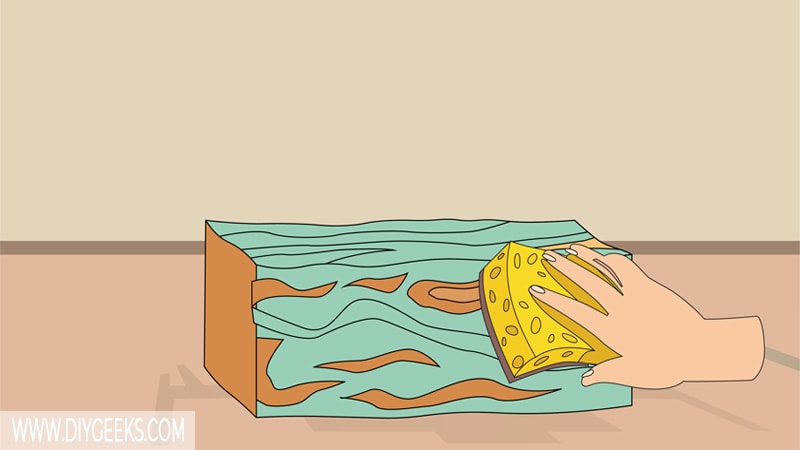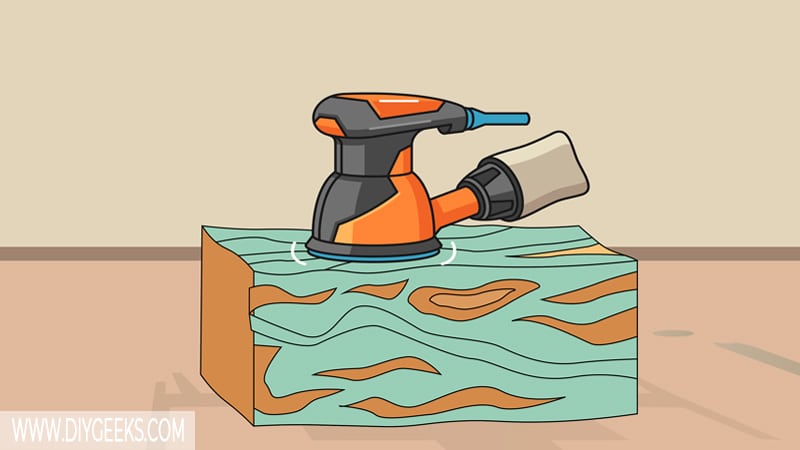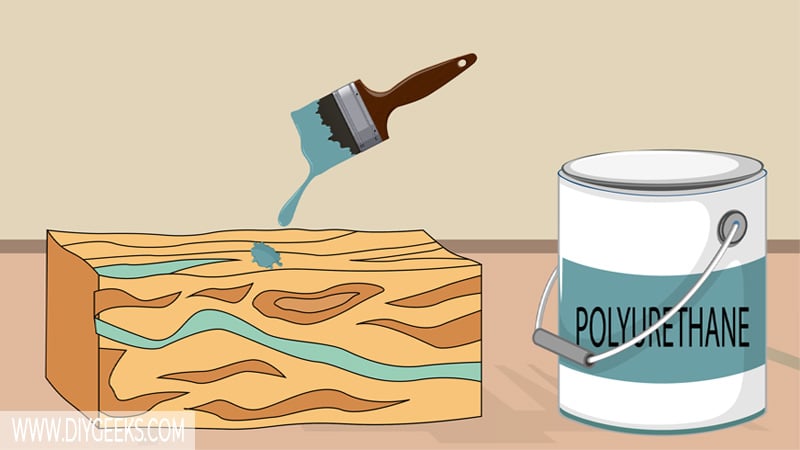You can apply polyurethane over old polyurethane if you sand the old coating to remove its glossy finish and its imperfections, bumps, dust, or dirt.
Polyurethane will adhere regardless if you sand or not, but the adhesion between coats won’t be good and the finish can peel off.
The type of polyurethane doesn’t matter; oil-based poly will adhere over water-based poly (& vice versa) as long as the old coating is fully dry (cured).
Things To Know
Polyurethane is a clear coat that protects the surface underneath from moisture, scratches, and other damage.
When dry, it forms a moisture-resistant coating that prevents water from penetrating its surface. Since water (or liquid) can’t penetrate its surface, paint can’t also. That’s why you can’t paint over polyurethane.
However, polyurethane is a topical sealer and not a penetrating finish. This means it can stick and dry over a topcoat without penetrating a surface.
Because of this, you can apply polyurethane over an old polyurethane coating. The new coating doesn’t need to penetrate the old coating and will stick over it.
Can You Apply A Second Coat Of Polyurethane Without Sanding?
You can apply a second coat of polyurethane without sanding but the adhesion won’t be as good as if you sanded. Sanding removes imperfections and creates tiny ridges (holes) in the surface that the next coating can penetrate too.
To sand between coats of polyurethane, use fine-grit sandpaper. Fine-grit sandpaper won’t remove the coating but will remove imperfections and even out the surface.
To sand old polyurethane before re-coating, use medium-grit sandpaper. The medium-grit sandpaper will remove the glossy layer.
Note: Sanding is mandatory if you want to re-coat a fully dried (cured) polyurethane coating. It will remove the glossy moisture-resistant layer and help the new coating to stick.
How To Apply Polyurethane Over Old Polyurethane?
To apply polyurethane over old polyurethane, do the following things.
- Clean the Old Coating.
- Sand the Old Coating.
- Apply Polyurethane.
The tools you need for this project are listed below.
- Fine-grit sandpaper.
- A degreaser (TSD) or mild solvent.
- Paint thinner.
- Drop sheets.
- Painter’s tape.
- Sprayer or foam paintbrush.
1. Clean the Old Coating

Clean the old polyurethane coating with a degreaser to remove dirt, dust, or grime from the surface that can show once the new polyurethane coating is applied and dries.
2. Sand the Old Coating

Sand the old polyurethane coating with medium-grit sandpaper (100-grit) to remove its glossy topcoat, and surface imperfections and bumps.
Don’t use coarse-grit sandpaper (100-grit) as it can remove the entire finish (unless that’s what you want).
Ensure to clean the finish with a damp rag after sanding to remove the dust.
Related Read: Can Polyurethane Be Tinted?
3. Apply the New Polyurethane

Apply two (2) thin polyurethane coats over the old polyurethane finish using a paintbrush, rag, or sprayer. The number of coats depends on how thick the existing finish is — the thicker the existing (or old) finish is, the fewer coats you must apply.
Wait until one coat dries, sand between coats, and apply the next coat. Water-based polyurethane takes around 6-8 hours, while oil-based polyurethane takes around 24 hours to dry between coats.
Can You Apply Exterior Polyurethane Over Interior Polyurethane?
You can apply exterior over interior polyurethane because they have the same formula, except exterior polyurethane has UV-blockers while the interior type doesn’t.
You can’t apply interior over exterior polyurethane for outdoor surfaces as the interior polyurethane doesn’t have UV blockers and won’t protect the surface from weather elements. You can do it for indoor surfaces only.
You can apply water-based over oil-based polyurethane (or vice versa) if the old coating is fully dry (cured). When dry, both types will have the same features and won’t repel each other.
Don’t apply water-based over oil-based polyurethane if the old coating is still wet. Wet oil-based and water-based polyurethane aren’t compatible as they use different solvents (water or oil). If water and oil are mixed, the finish won’t dry and will peel off.
Related Read: Can You Paint Over Polyurethane?


